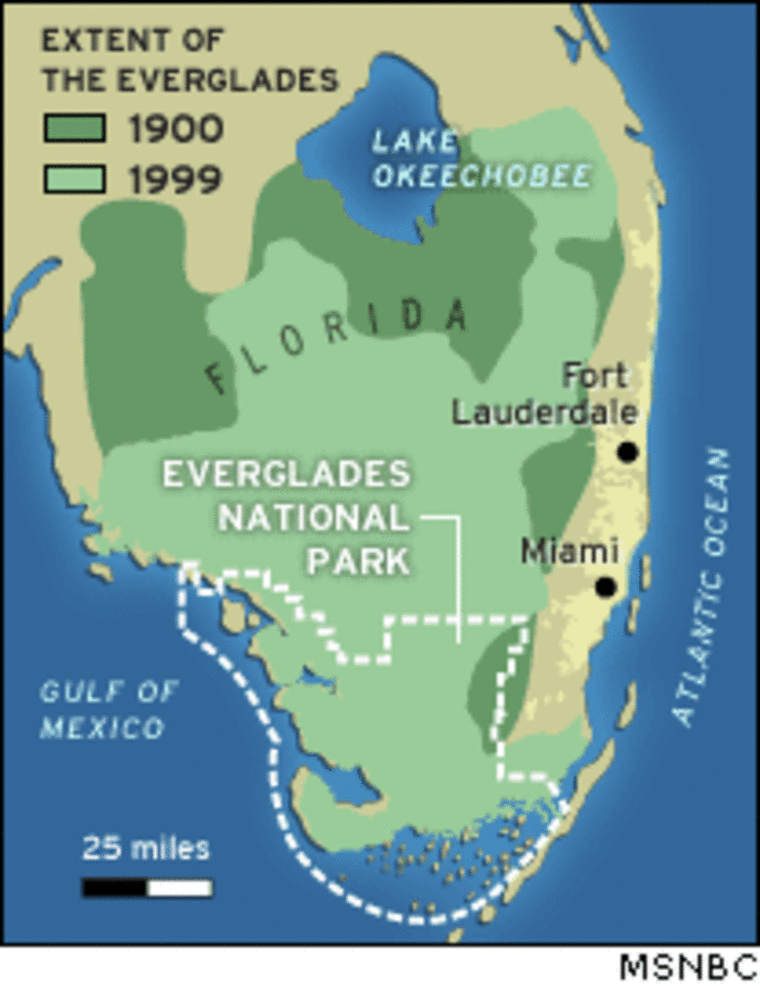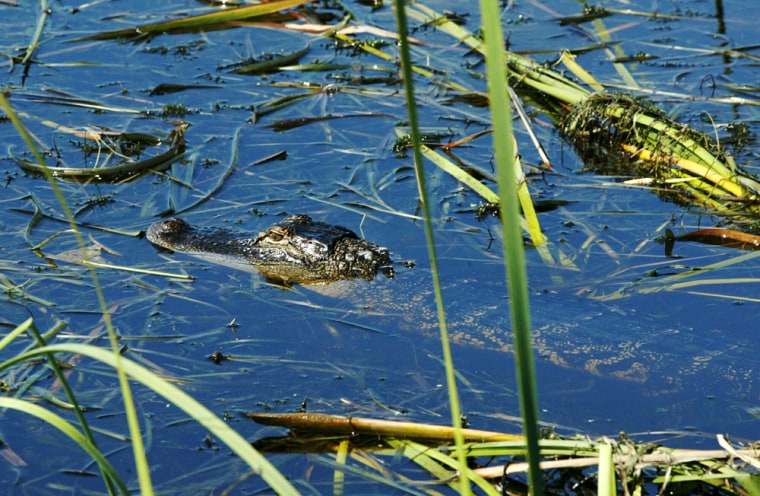Standing on an airboat, state biologist Donald Fox surveyed the dying, bare stalks peeking out of the coffee-brown lake water.
This past summer, Fox said, the vegetation here was lush enough to conceal a boat of duck hunters — the result of four years of intense conservation efforts. But four hurricanes in six weeks shredded the plants, left the water several feet too high and chased off small wading birds, who need shallow water to forage for food.
“Basically, we’re back to square one,” Fox said. “It was very devastating.”
Lake Okeechobee felt the effects of all four hurricanes that swept over Florida in August and September. It took direct hits from Frances and Jeanne, a near hit from Charley, which drenched the Kissimmee basin that drains into the lake, and was soaked again by the remnants of Ivan.
Everglades connection
The second largest freshwater lake within the contiguous United States behind Lake Michigan, Okeechobee is critical to the health of the Everglades and is commonly known as the state’s “liquid heart.”
The same winds and rain that left at least 83 people dead in Florida and caused an estimated $18 billion in insured losses ravaged the lake. Winds at least 79 mph and devastating storm surges left the shoreline littered with carcasses of alligators, fish and birds.
The storms flooded the lake’s tributaries, which caused its level to rise about a foot a week from 12.8 feet before Charley, which hit southwestern Florida on Aug. 13, to a crest of just over 18 feet.
The combined effect of flooding and other damage could wipe out an entire generation of the lake’s prized game fish — black crappie and large mouth bass, Fox said. Sport fishing brings in $100 million annually to the economically depressed area.
“The worst thing that can happen for the environment in this area is what happened,” said David Bogardus, a field officer for the World Wildlife Fund.
Dike holds back water
Lake Okeechobee is surrounded by the 143-mile Herbert Hoover dike, which was built in the 1950s in part to prevent another disaster such as the 1928 hurricane, when flooding and storm surge from the lake killed more than 2,000 people.

But the dike also prevents the lake from expanding into its natural flood plain. Instead, the water level rises, drowning plants that provide a habitat for fish and stabilize the lake bottom.
The lake was intentionally kept at a higher level, around 16 feet, throughout most of the 1990s because it was used for flood control and a backup water supply for heavily populated southeastern Florida.
That killed much of the bulrush, hydrilla, eelgrass and other plants, to the detriment of the game fish. After four years of conservation efforts — which began with lowering of the lake level — the plants were recovering.
“It’s kind of like building a pasture,” Fox said. “You put the grass on it before you put the cows on it.”
As a result, the fish and bird populations were rebounding, including endangered species such as the snail kite bird.
“Things were just getting perfect,” Fox said.
Water muddy, air smells like cow poop
Then the hurricanes hit, the water level rose again and the storms churned up sediment and phosphorus on the lake bottom, which make the water a thick muddy brown and block light to vegetation below.
Many plants were ripped up and left in the lake to rot, and some are decomposing underwater. The air smells of methane, like a dairy barn, and the water is thick like stew.
No plants or animals that need oxygen can live there, Fox said, and it could take months or years to recover.
State and federal officials are lowering the water level by releasing water through the lake’s only two outlets — east to the Atlantic Ocean and west to the Gulf of Mexico.
At its peak, the lake was taking in 40,000 cubic feet of water per second, said Susan Sylvester, water management technical specialist for the Army Corps of Engineers. That would fill an Olympic-sized swimming pool in about three seconds.
The lake can only drain about 15,000 cubic feet of water per second, she said. Recently water managers have been able to release more water than was coming in, Sylvester said.
Hoping for spring recovery
Sylvester said she expected the lake to return to a healthy level — between 13.5 feet and 15.5 feet — by spring, although the predicted wet winter could stymie those plans.
Earlier this month, Gov. Jeb Bush announced he would expedite a $1 billion plan to build three reservoirs, as part of the $8.4 billion Everglades restoration plan.
The reservoirs would hold enough water to fill about 6 million backyard pools, said Ernie Barnett, director of ecosystem projects at the Florida Department of Environmental Protection. The first would be ready in 2009 and the last in 2011.
“The only short term solution is to build the long term solutions quicker,” Barnett said.
